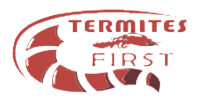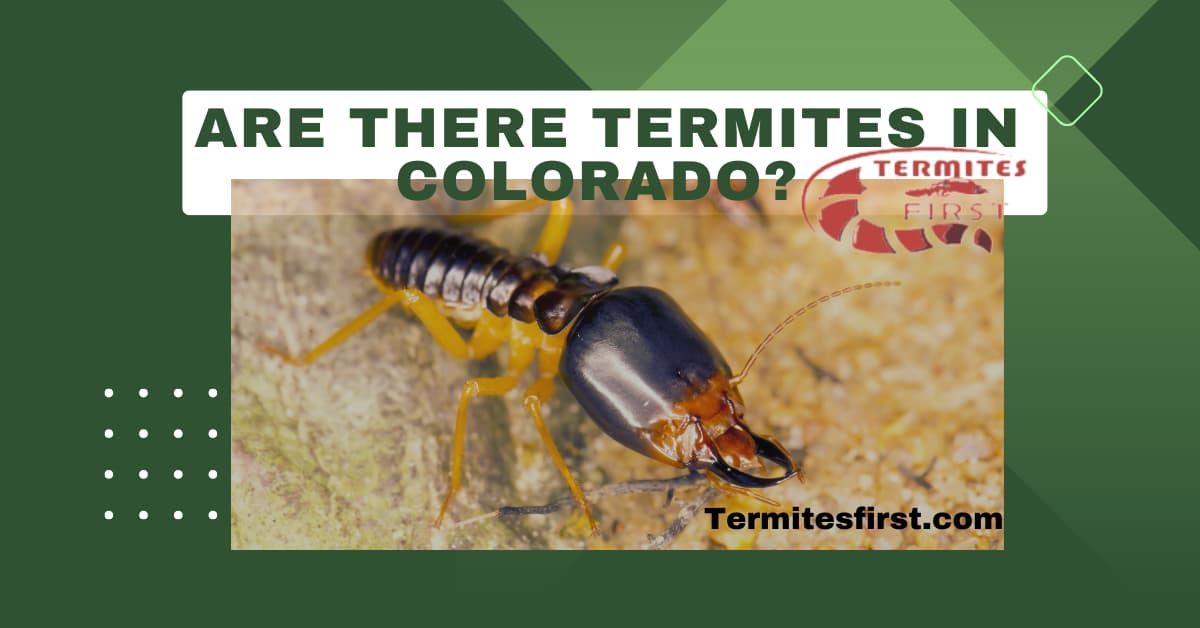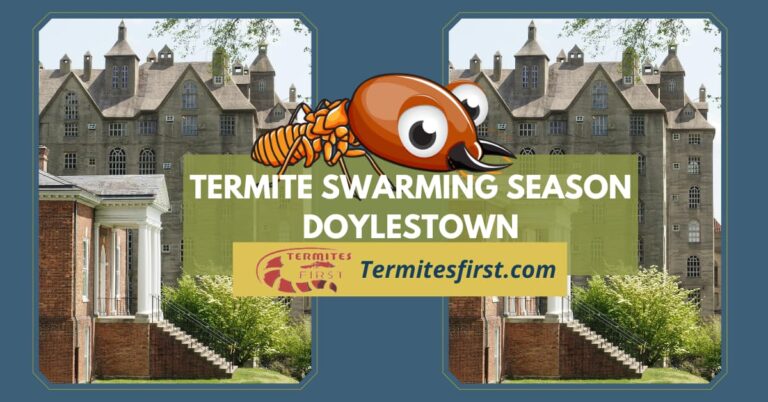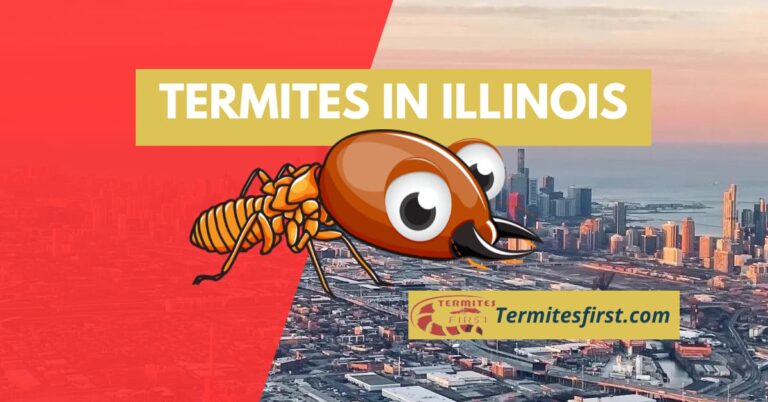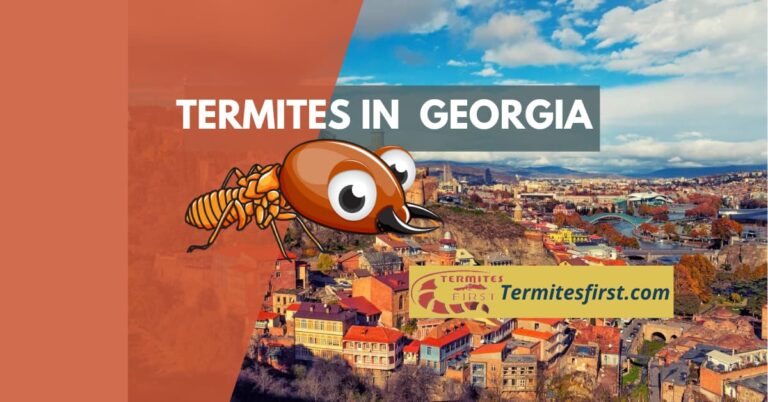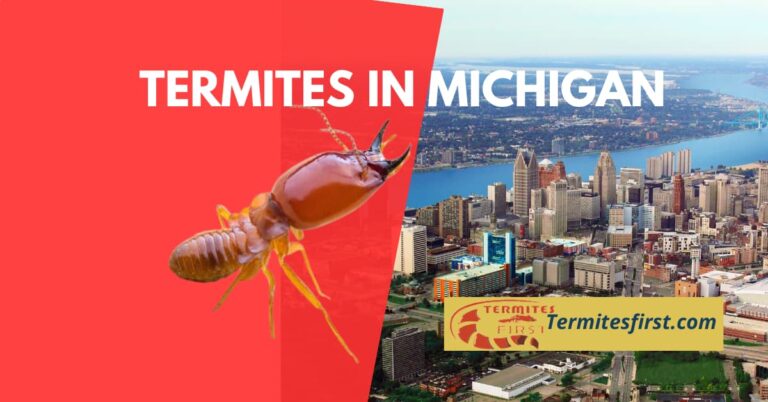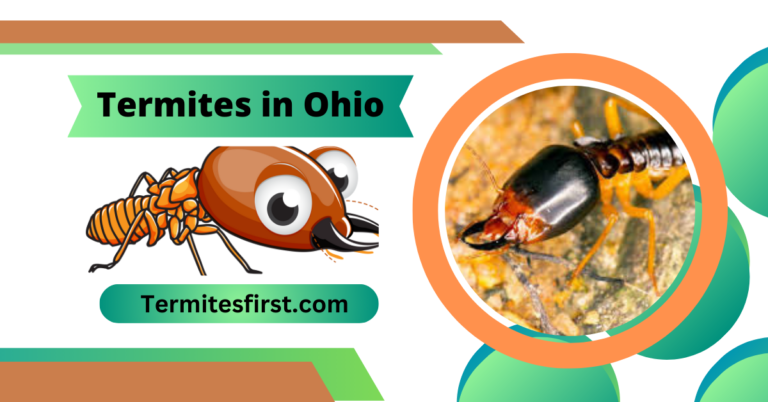Are There Termites in Colorado? My Insights on Types & Prevention
I often wonder, are there termites in Colorado? Many folks think these termite workers only thrive in warm climates, but that’s not the whole story according to termite experts. Termites can be sneaky and find their way into homes across various regions, including the Rockies state and tip zones.
In my experience, understanding termite activity and the damage termites cause is crucial for homeowners in the tip zone. It helps protect our homes from potential damage. Knowing how to identify signs of an infestation, such as those caused by subterranean termites, can save us time and money through effective termite prevention and termite control measures, possibly with the help of a licensed termite control expert. I’ll share what I’ve learned about termite presence in Colorado, including the damage termites cause, prevention tips, and treatment options. This information from a termite control expert can empower you to take action in the tip zone and safeguard your space against subterranean termite infestation probability zones.
Key Takeaways
- Colorado has different types of termites, including subterranean, drywood, and Formosan termites, which can affect homes and properties.
- Subterranean termites are the most common in Colorado and live underground, making them harder to detect early.
- Drywood termites are less prevalent in Colorado but can still cause damage; be aware of their presence.
- Formosan termites are aggressive and can lead to severe infestations; homeowners should stay vigilant about prevention.
- Regular inspections and monitoring for signs of swarming or damage can help detect termite presence before it becomes a major problem.
- To prevent infestations, eliminate wood-to-soil contact, fix leaks, and keep your yard free of debris that may attract termites.
Termites in Colorado
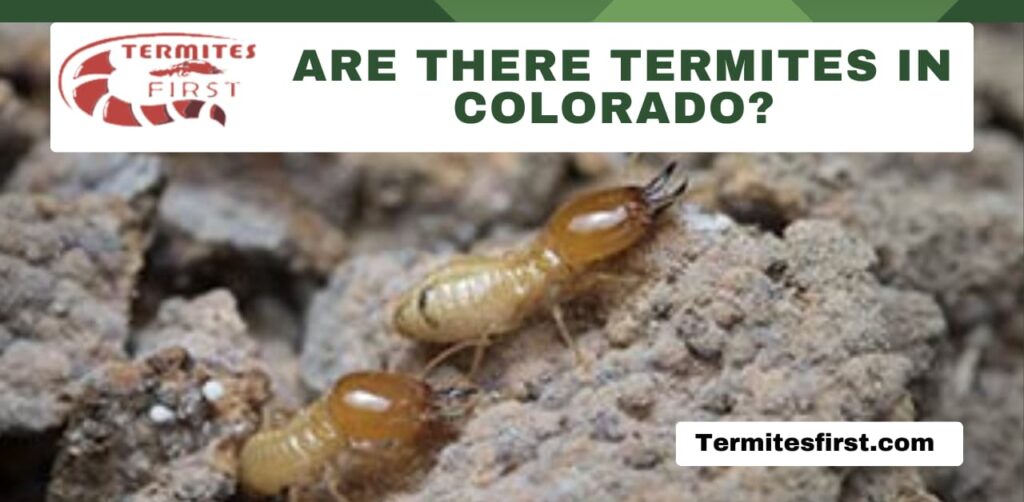
Types Found Here
Subterranean termites are the primary type active in Colorado. They live underground and build extensive tunnels. I find it interesting that drywood termites may also be present, especially around Grand Junction. These termites nest in the wood they consume, unlike subterranean termites. Formosan termites have not been reported in Colorado, which is a relief for many homeowners.
Common Characteristics
Subterranean termites typically measure about ¼ inch long and are light brown to yellowish in color. Their bodies appear soft and elongated. Drywood termites differ significantly; they are larger and have a more robust appearance. Nesting behavior varies as well. Subterranean termites create nests in the soil, while drywood termites prefer to stay within their wooden food source. Recognizing these traits helps identify termite species effectively.
Seasonal Activity
The swarming season for termites usually occurs after rainfall in spring. During this time, winged termites leave their colonies to mate and establish new colonies. Swarming can also take place during winter months inside heated buildings, often indicating a termite infestation, which may require a termite control expert. Temperature and moisture levels greatly influence termite activity throughout the year. I’ve observed that warmer weather tends to increase their presence in homes, making it crucial to stay vigilant.
Potential Damage
Termites can cause severe damage to homes, particularly structural damage to wooden components. They eat through wood, weakening beams and supports over time. Early detection is vital to prevent extensive damage from occurring. I once read about a homeowner who faced significant repair costs due to delayed action against termites. The financial implications of termite damage repairs can be staggering for homeowners. Regular inspections can save money and protect property value.
Subterranean Termites
Identifying Features
Subterranean termites have distinct features that help in their identification. Their antennae are straight and bead-like. The body is segmented, with a broad waist. Winged termites, also known as swarmers, have two pairs of wings that are equal in length.
These features can easily confuse them with carpenter ants. Carpenter ants have elbowed antennae and a narrow waist. Recognizing these differences is crucial for effective pest control. Misidentification can lead to improper treatments.
Habitat Preferences
Subterranean termites prefer moist environments found in soil and wood sources. They build nests underground, close to their food supply. This habit makes them particularly dangerous since they can go unnoticed for long periods.
In contrast, drywood termites favor dry wood and do not require contact with the soil. Colorado’s climate can influence habitat selection for subterranean termites. The state’s mix of wet and dry conditions creates ideal environments for these pests.
I’ve noticed that many homes in Colorado have wooden structures at ground level, making them vulnerable to infestations. I recommend checking these areas regularly to prevent any issues.
Prevention Tips
Regular inspections are vital to prevent termite infestations. Homeowners should look for signs of damage and droppings around their properties. Maintenance is equally important; sealing cracks and crevices blocks potential entry points.
Keeping wood piles away from the foundation is another effective strategy. Wood should be stored at least 20 feet from the house and elevated off the ground. This practice reduces the risk of attracting subterranean termites.
I often advise friends to be proactive about home maintenance. A small effort today can save significant costs later if an infestation occurs.
Drywood Termites
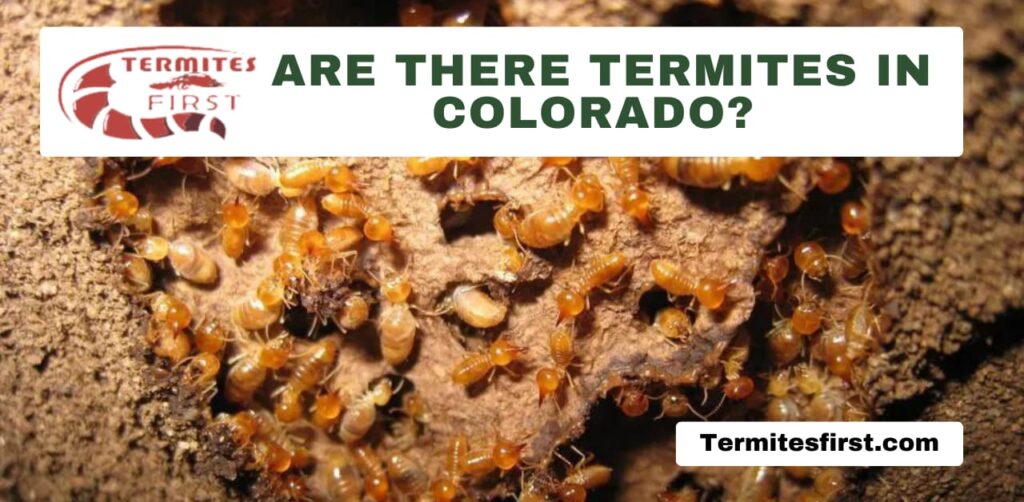
Key Traits
Drywood termites are known for their ability to cause significant damage to wooden structures. They can live inside the wood they consume, making them hard to detect. Their colonies are smaller than those of subterranean termites, often numbering in the hundreds or thousands. Each colony has a queen, king, workers, and soldiers. The queen can lay thousands of eggs each year, which increases the risk of drywood termite infestations.
I find it fascinating how these insects work together. Workers gather food and build tunnels, while soldiers protect the colony. This social structure helps them thrive in various environments. Their rapid reproduction and social behavior contribute to their potential for widespread damage.
Usual Habitats
In Colorado, drywood termites prefer warm and dry conditions. They often inhabit areas with moisture, such as near firewood piles or damp basements. Proximity to wood sources is crucial for their survival. They seek out untreated wood in homes or buildings where they can establish colonies.
Urban areas may have more instances of drywood termite infestations due to the abundance of wooden structures. However, rural areas also present risks, especially if homeowners store firewood improperly. I’ve seen how storing firewood against a house can create an inviting environment for these pests.
Control Methods
Managing drywood termite infestations requires several strategies. Homeowners should consider chemical treatments as one option. These treatments can effectively kill termites within the wood but may require multiple applications.
Bait systems are another method used for control. They attract termites and deliver slow-acting insecticides over time. This approach helps eliminate entire colonies but might take longer to show results.
Professional pest control services play a vital role in addressing severe infestations. Experts can assess the situation and recommend the best course of action tailored to specific needs. I believe that hiring professionals is essential when dealing with extensive damage.
Formosan Termites in Colorado
Presence and Spread
Termites can spread quickly through the transportation of infested materials. This includes wood, mulch, and even furniture. People often unknowingly move these items, allowing termites to establish in new areas. Drywood termites have a high potential to settle wherever humans create favorable conditions.
Local climate plays a significant role in influencing termite populations. Warmer temperatures support their growth and reproduction. In Colorado, the climate varies widely across regions. This variation can impact how well different termite species thrive.
Unique Characteristics
Termites exhibit unique behaviors that set them apart from other pests. They work together in colonies, which can number in the thousands. This cooperative behavior helps them build complex nests and find food more efficiently.
Pheromones are crucial for communication among termites. These chemical signals help them coordinate activities like foraging and defense. Understanding these traits can help in recognizing termite infestations early.
I find it fascinating how these small creatures operate as a team. Their ability to communicate effectively enhances their survival chances. Observing their behaviors can provide insights into prevention strategies.
Management Strategies
Integrated pest management (IPM) offers effective strategies for controlling termites. This approach combines various methods to minimize infestations. It includes habitat modification, biological controls, and targeted treatments.
Regular inspections are vital in any management plan. Homeowners should schedule checks at least once a year. Early detection of termites can save significant repair costs later on.
Homeowner education is also essential in preventing infestations. Understanding how to identify signs of termite activity can lead to quicker action. Simple steps, like sealing cracks and reducing moisture, can deter termites from entering homes.
Swarming Patterns
When They Swarm
Termite swarming events occur under specific conditions. Warm temperatures and high humidity trigger these swarms. In Colorado, swarming typically happens during late spring to early summer. This timing aligns with the rainy season, which creates ideal moisture levels for termites.
I have noticed that after a rainstorm, the air feels different. It’s as if nature is ready to burst into life. Termites sense this change and take to the skies. Swarming signals a potential nearby infestation. A swarm indicates that a colony has reached maturity and is ready to expand.
Recognizing Swarms
A termite swarm looks like a cloud of small insects flying together. These insects are usually dark brown or black and measure about half an inch long. During swarming, they exhibit erratic flight patterns. You might see dozens or even hundreds of them at once.
In Colorado, swarming often occurs in May or June. The warm weather and increased humidity create perfect conditions for these insects. Recognizing a swarm is crucial because it serves as a warning sign. It suggests that there may be an established colony nearby.
Impact of Swarming
Swarming has significant implications for homeowners. It indicates a need for vigilance against potential infestations. If left unchecked, swarming can lead to new colonies forming close by. I remember my neighbor’s experience with termites; they ignored the signs and faced severe damage later.
The risk increases if swarming is not addressed promptly. New colonies can quickly establish themselves, leading to more extensive damage over time. Homeowners should take immediate action upon recognizing swarms in their vicinity. Regular inspections can prevent major issues down the line.
Detecting Termites
Early Signs to Spot
Mud tubes are one of the first signs of termite activity. These tubes look like small tunnels made of soil and wood. They often appear on walls or foundations. Discarded wings from swarming termites can also be a clue. They shed their wings after mating, leaving them behind.
Recognizing these signs is crucial. If ignored, a small problem can turn into a full-blown infestation. I always check for these signs in my home, especially during warmer months when swarming occurs. Homeowners should monitor their properties regularly. This helps catch termite activity early.
Inspection Techniques
Effective inspection techniques are key to detecting termite presence. Start by examining both interior and exterior areas of your home. Look for holes in wood, soft spots, or any visible damage. It’s important to inspect areas like basements and crawl spaces.
Using tools can make inspections easier. A moisture meter helps find damp areas that attract termites. Flashlights are useful for checking dark corners. I often recommend using a simple screwdriver to probe wood for softness. This can reveal hidden termite damage.
Professional Help
Hiring a licensed termite control expert has many benefits. These professionals know how to identify different species of termites. They can recommend appropriate control measures based on the specific situation. Their expertise helps in developing an effective termite barrier.
Ongoing monitoring is essential too. Professionals can schedule regular inspections to ensure your home stays protected. I’ve found that this proactive approach saves money in the long run by preventing severe damage.
Preventing Infestations
Home Maintenance Tips
Regular home maintenance is crucial for minimizing termite risk. Inspect the foundation and walls for cracks. I check my home every few months to catch issues early. Addressing moisture problems is essential. Termites thrive in damp environments.
Ensure gutters are clean and drain properly. Clogged gutters can lead to water pooling near the foundation. This moisture attracts termites, increasing the chance of an infestation. I often remind friends to keep their drainage systems clear. It’s a simple step that can save a lot of trouble later.
Landscaping Considerations
Landscaping practices also play a role in reducing termite attraction. Avoid using mulch excessively around your home. Mulch retains moisture, which can draw termites closer. Keep it at least 12 inches away from the foundation.
Maintaining a barrier between soil and wooden structures is important. Plant shrubs and trees away from the house. Roots can create pathways for termites to enter. I’ve seen homes with beautiful gardens, but they need careful planning to avoid inviting pests.
Barrier Methods
Various barrier methods can prevent termite entry effectively. Physical barriers like steel mesh and concrete can deter these pests. Installing these barriers during construction is ideal. They provide a strong defense against infestations.
Chemical barriers also play a significant role in protection. These treatments create a toxic zone around your home that termites cannot cross. Many homeowners opt for this method as part of their effective termite prevention strategy.
I believe combining both physical and chemical barriers offers the best protection against termites. Each method has its strengths, and together they enhance overall security.
Conclusion:-
I’ve covered the presence of termites in Colorado, including the types and swarming patterns. Understanding how to detect and prevent these pests is crucial for homeowners. Whether it’s subterranean, drywood, or Formosan termites, being proactive can save you time and money down the line.
If you suspect a termite problem or want to safeguard your home, don’t hesitate to reach out to a pest control expert. Taking action now can protect your property for years to come. Stay informed and keep your home termite-free!
FAQ’s:-
Yes, termites are present in Colorado, primarily subterranean and drywood species. They can cause significant damage to homes if not detected early.
Colorado is home to subterranean termites and drywood termites, with Formosan termites being less common. Each type has distinct behaviors and threats.
Look for mud tubes, discarded wings, or hollow-sounding wood. Regular inspections by professionals can help identify termite activity early.
Termite swarming typically occurs in spring and early summer. Winged reproductives leave their colonies to mate and establish new colonies.
To prevent infestations, eliminate moisture sources, seal cracks, and maintain proper ventilation. Regular inspections by pest control experts are also recommended.
Formosan termites are rare in Colorado but can be problematic where they exist. Awareness and prevention strategies are essential for homeowners.
If you suspect a termite infestation, contact a pest control professional immediately. Early intervention is crucial to minimize damage and costs.
